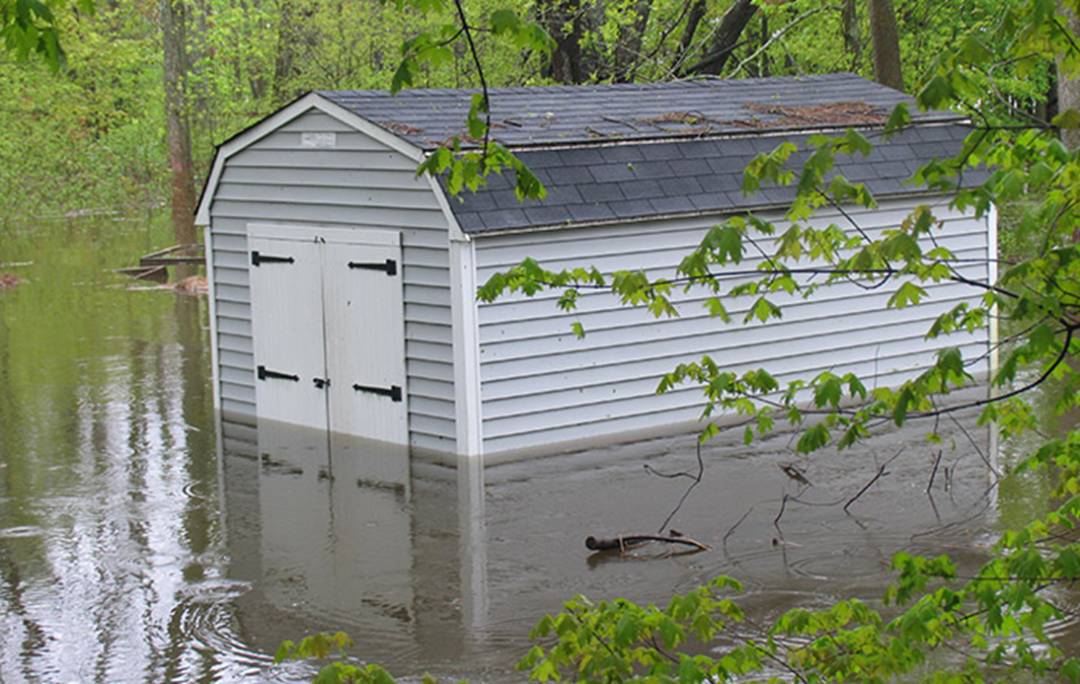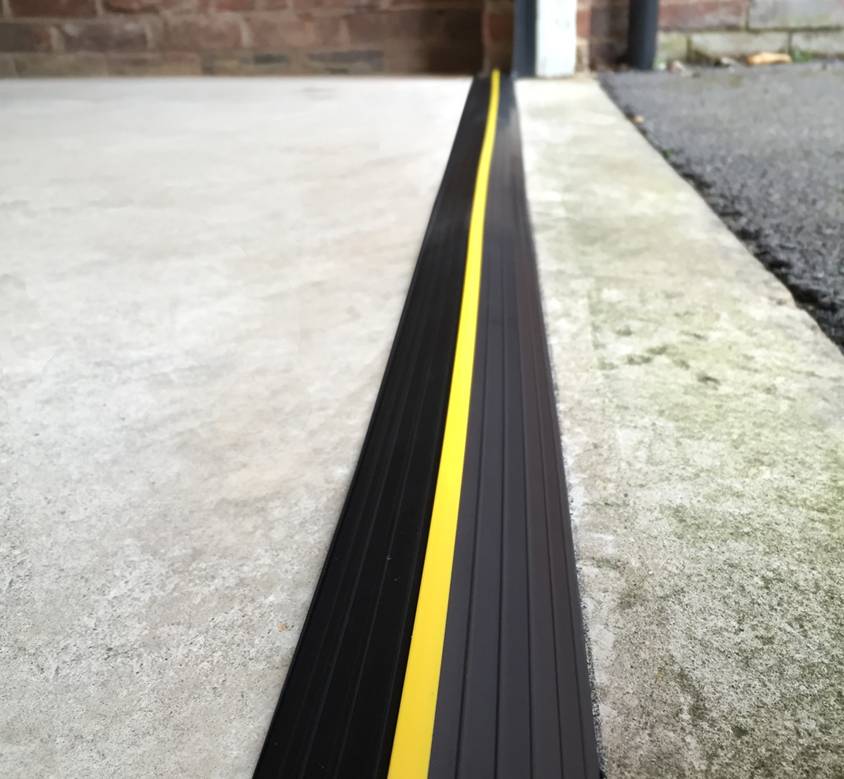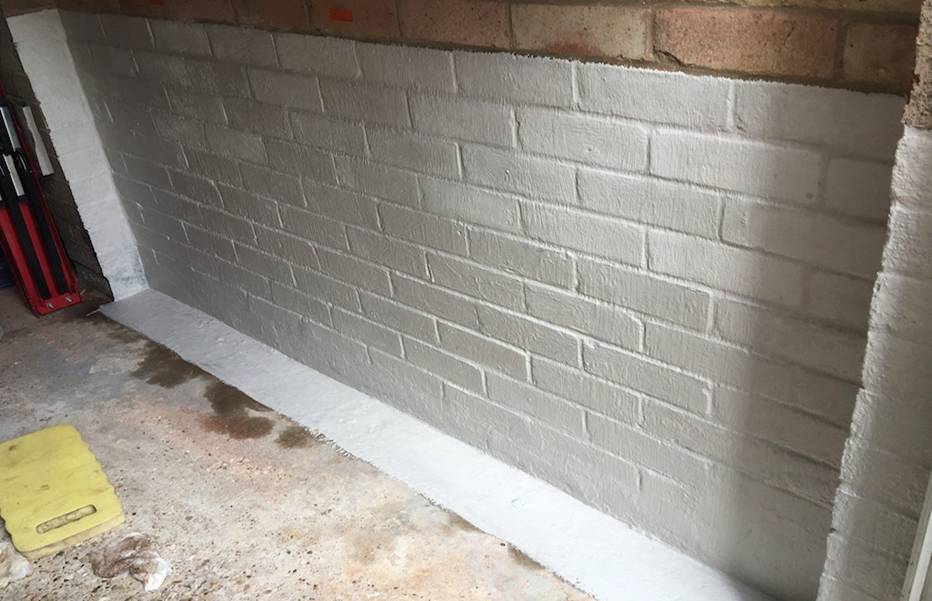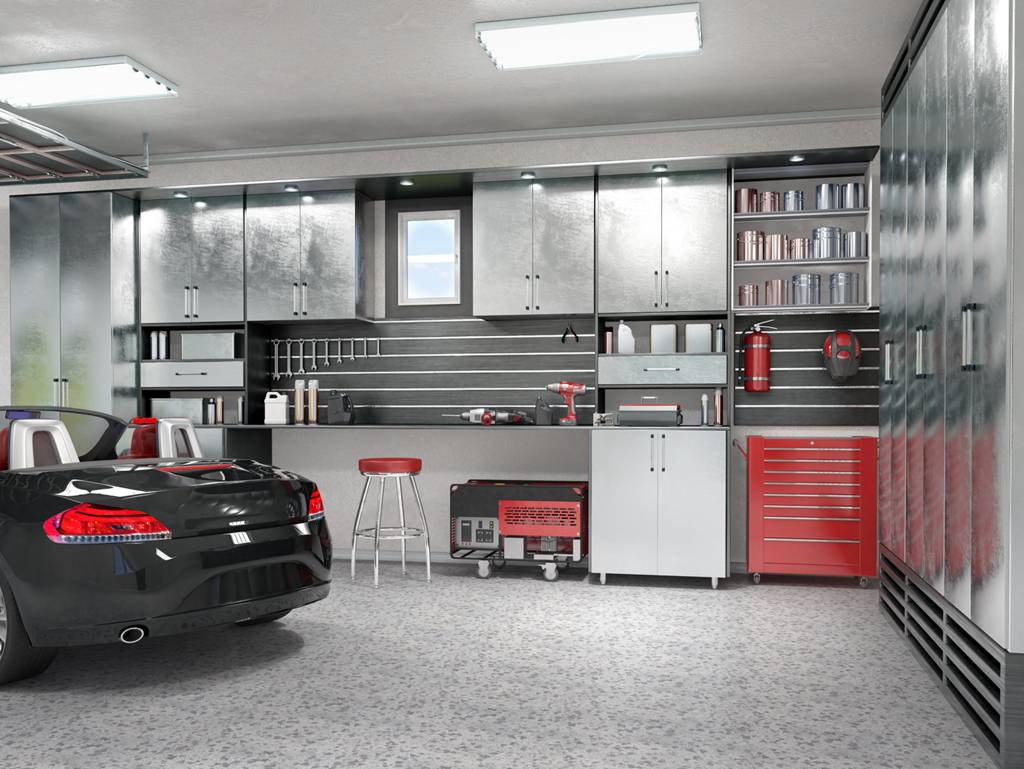Water Damage in Your Garage - What Causes It and 9 Ways to Prevent It
For all their virtues, garages have a dirty secret they don’t want you to know about - they’re notoriously prone to water damage.
Now, we love a good garage as much as the next person, but if not cared for properly, they can leak and require extensive repairs. Not to mention the cost and potential damage to items you may be storing in the garage.
A well maintained garage can add a significant amount of value to your home, so we’ve boiled the ocean for some useful tips on how to keep water out of your garage.
It’s a bit of an … erm… dry topic (pretty ironic, we know), but we’ll try to make it as smooth a sailing as possible. Right, now that we’ve got all the water puns out of the way, let’s dive in. 👀
Rent out my Garage
Join thousands of Stashbee Hosts, start earning now
Rent out my GarageWhy are garages vulnerable to water leaks?
Garages are more prone to leaks for one simple reason - they often lack the level of waterproofing and TLC that your house or flat would get.They typically have a large door that’s not fully sealed, as well as a floor and walls that are made of concrete or bricks without any further insulation. Concrete is a porous substance, meaning that it naturally absorbs water like a sponge. This can cause cracks to form, which allows even more water to enter.
In addition, the roof of a typical UK garage is flat. While the roof structure has some pitch to allow water to drain away, this can sometimes be insufficient, which can lead to water getting stuck on the roof and damaging the structure over time. Add to that the fact that older garages may lack proper insulation or have insulation that hasn’t been replaced in many years, and the roof of a garage can be one of its weakest spots.
One other challenge with garages is that they tend to be full of stuff, which means that a leak could go unnoticed for longer than it would in your home. As a result, the leak could expand and cause harm not only to the structure of the garage, but also to anything you may be storing inside.
Related
How to Prevent and Remove Damp and Mould from your Garage
Common causes of dampness in a garage
Before we talk about how to prevent leaks, it’s useful to understand the most common things that could go wrong with your garage. That will also help you diagnose where a leak may be coming from if you ever get one.The floor
Over time, cracks may start to appear on the concrete floor of your garage. These cracks will allow water from the ground underneath to enter the garage, especially during times of heavier rain or snowfall. A similar problem can occur as your concrete floor ages and develops what’s known as surface pitting. This phenomenon occurs when tiny holes appear in the concrete and act as reservoirs that water accumulates in.
Under the door
It may not come as a surprise that your door may be a major reason for excessive amounts of water in your garage. Who would have thought that having a gap between the floor and the bottom of the door could cause an issue, right?
Even if your garage door is as hermetically sealed as an astronaut’s spacesuit though, it might still not be enough if the gradient of your driveway is sloping down towards your garage. Water would always flow down following the path of least resistance, so make sure to check if your driveway (if you have one) is sloping away from the garage door.

I hope they are storing fish.
The walls
It can be hard to pinpoint the source of moisture coming from the walls of your garage. The main culprits to look out for:
- Issues with the roof: often a leak may be visible on the wall itself, but the root cause could be the roof. More on that in the next section
- Plumbing issues: this is relevant if your garage is attached to your house. If you have water pipes running behind the garage wall (e.g. to supply a washing machine or a water heater), they could develop a leak that seeps into the garage
- Joint seams and sill plates: anywhere where the wall connects to another part of the garage (the roof, the door, a window) could be a potential source of a leak, especially as the construction ages
- Lack of insulation: garage walls are usually not insulated, so moisture can enter through the wall itself, especially if it’s made of concrete and is an external facing wall
Related
How to Insulate a Garage
The roof
Constant rain, sun and wind exposure can take its toll on your garage roof. While a good roof can take a lot of beating, it does develop faults over time.
Some of the most common issues that come up:
- Damaged insulation: look out for standing water or discoloured areas on the roof. Other tell-tale signs of this issue are obvious tears or cracks in the insulation and bubbles on its surface, which suggests water may have entered and then evaporated
- Broken shingles (if your roof has them)
- Loose roof flashing: these are thin bits of metal used to waterproof parts of the roof especially prone to leaks (e.g. where it connects to a chimney or a wall). Here’s more on roof flashing in case you were wondering.
Things you can do to prevent leaks
In the words of 16th century philosopher Desiderius Erasmus, “prevention is better than cure”. This statement is as true for your personal health as it is for the health of your garage.Luckily, there are a number of easy (and cheap) things you can do to reduce the risk of water damaging your garage. We’ve compiled a list of our top nine suggestions and indicated how easy and expensive they are to implement.
1. Ensure your door is properly sealed
The simplest thing to prevent water from entering through the gap at the bottom of your door is to install a garage door strip (also known as a weather seal). This is a strip of rubber or vinyl, which is fixed across the width of the garage floor right underneath the door.The door strip itself typically costs less than £100, and you can install it yourself using a few simple tools.

A door strip is easy to install and good at stopping water from entering under your garage door
2. Protect any valuable items that you’re storing in your garage
Even if all potential gaps in your garage are as tightly sealed as Noah’s arc, it’s always a good idea to give your belongings an extra bit of protection.Plastic sealable boxes are significantly more waterproof than cardboard, so we recommend using those for any valuable items. If you don’t have plastic boxes, you could always put your regular cardboard boxes into plastic bags as that reduces the risk too.
Another way of keeping your items out of harm’s way is to install overhead shelving or racking. This is especially effective in case of a leak coming from the walls or floor. It also has the added benefit of keeping your garage tidier and making it easier to find your stuff. The downside is that it’s a bit more expensive and could require some effort to install. Having said that, you can find a decent garage rack for £100-£150.
Related
Garage Ceiling Storage - Everything You Need to Know
3. Inspect your drainage regularly
A good means of preventing potential water damage that’s practically free is to maintain your garage drainage system clean. Over time debris, such as rotten leaves and rubbish, can clog up the gutters and downspouts, which can lead to water accumulating on the roof or around the garage foundation. Left unresolved, this can damage the structure and cause leaks.Make sure to inspect your drains once or twice per year and remove any blockages. If you spot any cracks or holes, you may need to contact a professional to get them repaired.
4. Install new drains
This one is especially relevant if the incline of your driveway is causing water to flow back into your garage during heavy rain. An effective solution is to install a trench drain (aka a French drain). As the name suggests, it involves digging a shallow trench in front of the door, which can direct water away from the garage.An alternative is to also install flood vents which would allow water to flow through the garage without flooding it.
Both of these options would bring significant benefit if you live in an area that gets a lot of rainfall or is prone to flooding, but bear in mind that the work could cost in the hundreds or even thousands of pounds.
5. Waterproof the garage walls
Walls can be a major source of dampness if left untreated, but the good news is that there are a variety of options to address that which are easy to implement.One common and effective solution is to cover the walls with tanking slurry, also referred to as cementitious tanking. It is a powder that when mixed with water forms a thick liquid which can be applied to the walls just like paint. Once it dries, it acts like a barrier that prevents water from entering the garage interior through the wall. It is used to waterproof basements, cellars and garages.
It works great on both brick and concrete, and is very cheap to buy (a 20-kg bucket of the stuff enough to cover over 6 sq m goes for less than £50). Here’s a great step-by-step guide on how to treat your walls with tanking slurry.

To tank or not to tank: that is the question?
Another option for the walls, as well as the floor, is to apply waterproof paint. A word of warning - while many paints claim to be “waterproof”, the degree to which they prevent dampness will depend on their type and the thickness of the film applied. In addition, there’s a difference between paints and coatings, the latter being thicker and better at preventing dampness.
If you want to go really deep on the nuances of this topic, we recommend this article. If, on the other hand, you find watching (reading about) paint dry a bit boring, suffice to say you should go for a two-part coating over a paint, preferably one that’s epoxy based.
One final thing to be mindful of. Applying paint directly onto your garage wall or floor won’t be sufficient to waterproof it. You also need a membrane between the paint and the untreated surface. Membranes also come in liquid form and can be applied as a layer before the paint.
6. Waterproof the floor
When your garage is first built, it is a good idea to treat the concrete floor with a sealer. The reason for that is because when it’s laid, the concrete goes through a period of “curing” (i.e. drying). As water evaporates from the surface of the floor, it creates microscopic channels, which can cause groundwater to seep through in the future.Treating the floor with a concrete sealer once it’s dried fills these tiny gaps and significantly reduces the likelihood of water passing through the concrete and causing dampness or water puddles inside the garage.
Even if your floor was sealed when the garage was built, it’s still a good idea to treat it with a waterproof coating periodically. Similarly to the walls, you can use a special type of paint or coating to do that. Just don’t forget to apply a membrane to the floor before painting on top.
Another simple solution is to cover any obvious cracks or holes that may have formed in the floor as these are weak spots that water can enter through. You would typically do that before treating the surface with the liquid membrane and coating described above. There are a wide variety of concrete fillers on the market to choose from.
7. Install a new floor
The big daddy of garage renovations - installing a spanking new floor. If you want to go the extra mile, there are a range of solutions you could go for, such as resin floors and tiles, which come in a wide variety of finishes. They also carry a much higher price tag (up to several thousand pounds) and are more commonly used if you plan to use the garage as a gym or a game room, for example.Related
Garage Floor Epoxy - What You Need To Know Before Going DIY

Garage life goals: epoxy floor finish
8. Insulate the roof
Much like with the drains, it is advisable to regularly check the roof for any cracks, broken shingles, standing water, or discolouration to the insulation. If you do spot any damage, then it should be fixed immediately to prevent any leaks.This article has useful information on how to insulate your garage roof. Unless you have experience doing this type of work, you would require a specialist to come and do the necessary repairs.
9. Get the garage insured
Even with all the precautions in the world, your garage could still suffer water damage, especially with the rising incidence of extreme weather events. If you’re storing valuable items, taking out insurance could be a good way to minimise the cost of replacing them and repairing any structure damage.Home insurance policies would typically cover your garage as long as it’s within the boundaries of your property. If it isn’t, then you may require a separate insurance policy specifically for the garage.
If you want to find out more, check out our article on the types of insurance options available for garages.
Before you go
So there you have it - our in-depth guide to why water damage in a garage can occur and how to prevent it.If you’ve got some spare space in your garage and are wondering what to do with it, why not check out how much you can earn by listing it with Stashbee.
Rent out my Garage
Join thousands of Stashbee Hosts, start earning now
Rent out my GarageSvetlin
Written 17th Apr 2023
